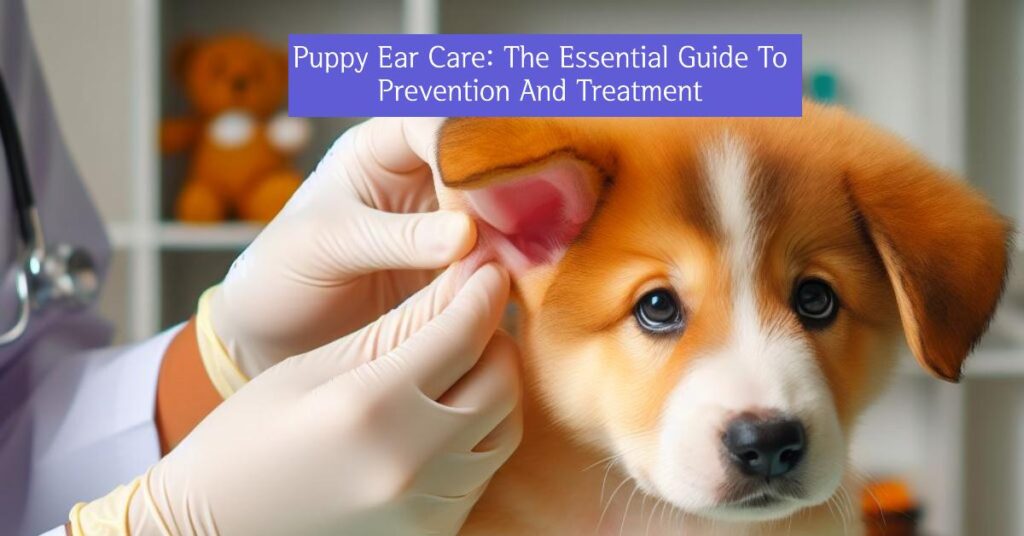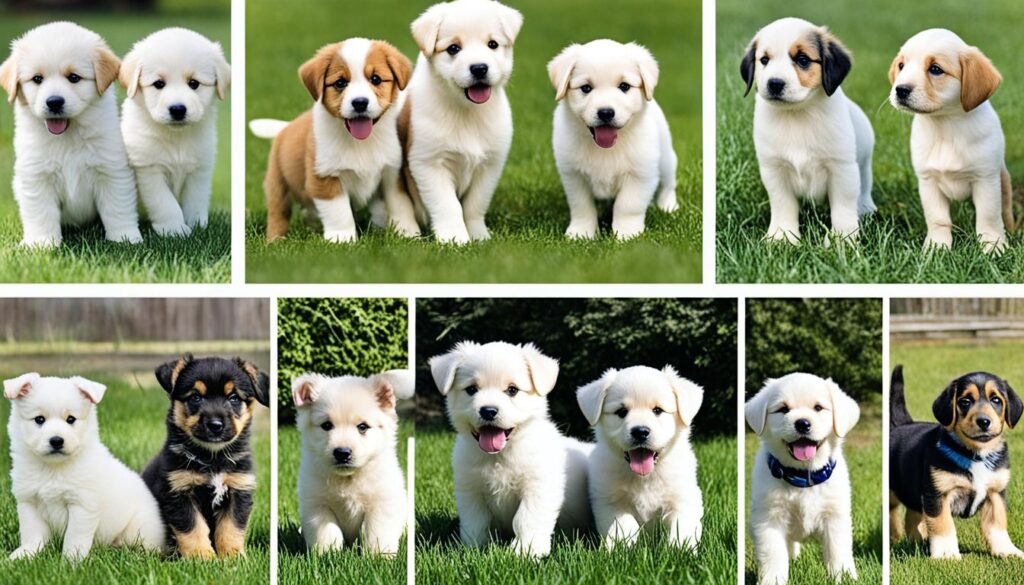
Puppy Ear Care-Preventing And Treating Common Issues
Puppy ears are the cutest, but they also need some TLC (Tender Loving Care) to stay healthy and strong like your furry friends. Puppy ear care is essential, as young pups have delicate ears that are more susceptible to infections, irritations, and injuries. Taking a proactive approach to ear care is crucial to prevent discomfort, potential hearing issues, and costly vet visits down the road. This blog is your ultimate guide to understanding puppy ear care, avoiding common problems, and knowing when to call the vet.
Key Takeaways
- Puppy ears are delicate and prone to infections, irritations, and injuries.
- Understanding ear anatomy, particularly the influence of ear shape, helps you recognize potential risks specific to your puppy’s breed.
- Regular ear cleaning, proper bathing techniques, and knowing the warning signs of ear problems are essential for prevention.
- If you see signs of an ear problem in your puppy, seeking veterinary care is crucial for accurate diagnosis and effective treatment.
- Proactive ear care can save your puppy from discomfort and prevent future health complications and costly vet bills.
Understanding Puppy Ear Anatomy
While puppy ears might seem simple, they have a surprisingly complex design for such a small package. Let’s break down the basics:
Basic Structure
Outer Ear:
The outer ear consists of two main parts:
- Pinna: Also known as the auricle, the pinna is the visible part of the ear that funnels sound waves into the ear canal. It can be either floppy or upright, depending on the breed.
- Ear Canal: The L-shaped ear canal extends from the pinna to the eardrum. It contains glands that produce wax (cerumen) and fine hairs. These hairs help trap debris and prevent foreign objects from entering deeper into the ear.
Middle Ear:
The middle ear lies between the outer ear and the inner ear.
Key components include:
- Eardrum (Tympanic Membrane): The eardrum is a thin, delicate membrane that separates the outer and middle ear. When sound waves hit the eardrum, it vibrates.
- Ossicles: These are three tiny interconnected bones:
- Hammer (Malleus): Attached to the eardrum, it transmits vibrations.
- Anvil (Incus): Connects the hammer to the stirrup.
- Stirrup (Stapes): The smallest bone in the human body amplifies and transmits vibrations to the inner ear.
Inner Ear:
The inner ear is a complex structure responsible for both hearing and balance.
Key components include:
- Cochlea: A snail-shaped, fluid-filled organ that converts sound vibrations into electrical signals. It contains tiny hair cells that respond to different frequencies.
- Vestibular System: This system includes the semicircular canals, which help maintain balance and spatial awareness. They detect head movements and contribute to equilibrium.
The Importance of Shape
While every puppy is unique, ear shape plays a significant role in their predisposition to ear problems:
- Floppy Ears: Breeds like Cocker Spaniels have less airflow within their ear canals. Reduced ventilation and trapped moisture create an ideal environment for infections to thrive.
- Upright Ears: Breeds like German Shepherds have better air circulation within the ear, reducing the risk of some issues. However, they are still susceptible to foreign objects lodged in the ears and irritating infestations like ear mites.
- Other Factors: Beyond shape, a puppy’s coat can influence ear health. Long hair around the ears can block airflow and trap debris. Additionally, allergies and individual variations in wax production also play a role.

Common Puppy Ear Problems
Puppy ears are adorable, delicate, and prone to a few common issues. Understanding what these problems look and feel like is essential for quick action and keeping your pup comfortable.
Ear Infections
Ear infections (otitis externa) are one of the most frequent reasons for vet visits with puppies. They occur when the lining of the ear canal becomes inflamed due to various causes:
- Types:
- Bacterial Infections: Often caused by an overgrowth of normal ear bacteria or introduced bacteria.
- Yeast Infections: Typically involve an overgrowth of Malassezia yeast, a naturally occurring organism in the ear.
- Mixed Infections: A combination of bacterial and yeast overgrowth.
- Symptoms
- Frequent head shaking
- Excessive scratching at the ears
- Redness and swelling of the ear canal
- Thick, foul-smelling discharge (can be yellow, brown, or bloody)
- Crusting or scabs around the ear
- Pain or sensitivity when the ears are touched
- Whining or crying
Ear Mites
These tiny parasites are particularly fond of puppy ears! Ear mites feed on skin debris and earwax, causing intense irritation.
- Transmission: Ear mites are highly contagious, spreading through direct contact with other animals or infested bedding.
- Symptoms:
- Intense itching and scratching
- Head shaking
- Dark, crumbly discharge resembling coffee grounds in the ear
- Redness and inflammation
- Scabs or wounds on the ears from scratching
Foreign Objects
Adventurous puppies have a knack for finding trouble; sometimes, that means getting things lodged in their ears. Common culprits include:
- Plant matter: Grass awns, seeds, twigs
- Insects: Ticks, fleas
- Household Debris: Small bits of toys, stuffing, etc.
- Symptoms
- Sudden head shaking or tilting
- Pawing at the ear
- Pain, redness, or swelling
- Discharge from the ear (could be clear, bloody, or pus-like)
Allergies
Like humans, puppies can suffer from allergies, with symptoms manifesting in their ears.
- Triggers:
- Environmental allergens (pollen, dust, mold)
- Food sensitivities (specific proteins or ingredients)
- Symptoms:
- Recurring or chronic ear infections
- Itchiness, redness, inflammation
- Licking or chewing on paws
- May have other allergy symptoms (skin problems, digestive upset)
If you suspect your puppy has an ear problem, you must see your veterinarian for a proper diagnosis and treatment plan. Home remedies alone may not be enough and could even worsen the situation.

Puppy Ear Care – Prevention
The right way to manage puppy ear troubles is to prevent them in the first place! Simple habits can dramatically reduce your puppy’s risk of ear infections, discomfort, and costly vet visits.
Cleaning Basics
Regular ear cleaning is a cornerstone of puppy ear care. Here’s how to do it safely and effectively:
- Supplies:
- Veterinarian-approved ear cleaning solution designed for dogs
- Cotton balls or gauze
- A soft towel
- Frequency: The ideal cleaning frequency depends on your puppy’s breed and individual needs. Your vet can advise you, but a good starting point is once or every other week. Breeds prone to problems or puppies who swim often require more frequent cleanings.
- Technique:
- Soak a cotton ball or gauze with the ear cleaner.
- Gently wipe the inside of the ear flap and the outer part of the ear canal. Never insert anything into the ear canal itself.
- Use a clean cotton ball or gauze for the other ear.
- Dry the ears with a soft towel to remove excess moisture.
- Handling a Wriggly Puppy: Start with short cleaning sessions and lots of treats to make it a positive experience. If your puppy is particularly squirmy, enlist a helper to hold them gently.
Bathing and Drying
Bath time should mean something other than waterlogged ears! Here’s how to keep water out and ears dry:
- Before the Bath: Place cotton balls loosely in your puppy’s ears as barriers. Don’t push them down, just enough to block the ear canal opening.
- During the Bath: Avoid spraying water directly on the face and ears. Use a washcloth to clean the face gently.
- After the Bath, Immediately remove the cotton balls. Thoroughly dry the outside of the ears and the inner ear flap as much as possible with a soft towel. Never use a hair dryer on hot settings, as the heat can damage a puppy’s delicate ears.
Hair Trimming
For breeds with long hair around their ears, regular trims can improve airflow and visibility when checking the ears. This is especially important for those floppy-eared friends! Ask your groomer or veterinarian for guidance on safely trimming ear hair.
Recognizing Early Warning Signs
Knowing what’s normal for your puppy’s ears helps you catch problems early. Be on the lookout for:
- Frequent scratching or head shaking
- Redness or swelling
- Unusual odor
- Discharge of any color
- Changes in behavior (seems painful, head tilting)
If you notice any of these signs, contact your veterinarian.
Treating Puppy Ear Issues
Unfortunately, some puppies will still experience ear problems even with the top most care. Knowing what to expect and how to support your pup through treatment makes the process smoother for everyone.
When to See the Vet
While some minor irritation might be manageable at home, certain red flags mean a vet visit is non-negotiable:
- Persistent Symptoms: If your puppy’s ears don’t improve with basic cleaning or the problem keeps recurring.
- Severe Discomfort: If your pup seems to be in significant pain, crying, or excessively sensitive to touch,
- Discharge: Any discharge that is thick, foul-smelling, yellow, brown, or bloody warrants vet attention.
- Changes in Hearing or Balance: A head tilt, disorientation, or stumbling might indicate a severe inner ear problem.
- Suspected Foreign Object: If you think something is stuck in your puppy’s ear, never try to remove it yourself, as you could cause more damage.
Diagnosis and Treatment
Your veterinarian will closely examine your puppy’s ears, likely using an otoscope to look deep inside the ear canal. They might also take samples for further analysis. Here’s what might happen:
- Diagnosis: Your vet will determine the type of infection (bacterial, yeast, or mixed), if ear mites are present, or if there’s a foreign object lodged inside.
- Treatment:
- Ear Cleaning: A thorough professional cleaning at the vet clinic is often a first step to removing debris and buildup.
- Medication: This could include topical ear drops containing antibiotics, antifungals, or anti-parasitic medicines, depending on the cause. Oral medications might also be necessary for severe infections.
- Foreign Object Removal: Your vet has the tools and expertise to remove foreign objects safely.
- Addressing Underlying Causes: In cases of allergies, your vet will work with you on identifying triggers and managing the allergy long-term.
Home Care Tips
Alongside your vet’s specific treatment plan, these tips can help soothe your pup’s discomfort and promote healing:
- Administer Medication as Directed: Complete the course of any prescribed medications, even if symptoms improve.
- Gentle Cleaning: Your vet might recommend continuing ear cleaning at home with their approved solution.
- Warm Compress: If your puppy tolerates it, a warm compress (not hot) applied to the base of the ear can offer some relief. Ensure it’s a comfortable temperature.
- The Cone of Patience: An Elizabethan collar (cone) might be necessary to prevent your puppy from scratching and further irritating their ears.
- Limit Activity: Restrict overly rambunctious play, especially head shaking, until the ears have healed.
- Follow-up Visits: Your vet may want to recheck your pup to ensure the problem is entirely resolved.
Always consult your veterinarian before using over-the-counter ear treatments or home remedies. Some products can harm dogs, especially if there is a ruptured eardrum.
Conclusion
Puppy ear care might not be the most glamorous aspect of puppy ownership, but it’s vital. You can keep your puppy’s ears healthy and comfortable by practicing proactive ear cleaning, staying alert to warning signs, and seeking veterinary care when needed. A little time and attention invested in ear care can save your pup from unnecessary discomfort and prevent those expensive vet bills for chronic ear problems later in life.
Do you have any puppy ear care tips or stories to share? Leave a comment below; we’d love to hear from you and start a conversation within the puppy parent community!
FAQs
Q: What kind of ear cleaner is safe for puppies?
A: Always choose a veterinarian-recommended ear cleaner specifically formulated for dogs. Avoid human ear cleaners or products containing harsh ingredients, as they can irritate your puppy’s delicate ears. Your vet can advise you according to your puppy’s needs.
Q: Are puppies prone to ear infections?
A: Yes, puppies are more susceptible to ear infections than matured dogs. This is due to their still-developing immune systems and the shape of their ear canals, which might hold more moisture. Certain breeds with floppy ears have an even higher risk.
Q: My puppy’s ears smell bad. What does that mean?
A: A foul smell from your puppy’s ears usually shows infection. This odor can vary depending on whether the infection is bacterial, yeast-based, or if a foreign object is present. See your veterinarian for an accurate diagnosis and prompt treatment.
Q: Can I use Q-tips to clean my puppy’s ears?
A: No, Q-tips are not recommended for cleaning a puppy’s ears. They can accidentally push wax and debris deeper into the ear canal, potentially causing damage or even rupturing the eardrum. Stick to wiping the visible parts of the ear with cotton balls or gauze soaked in an approved cleaning solution.
Q: How Often Should I Check My Puppy’s Ears?
A: It’s a good habit to do a quick visual check of your puppy’s ears at least once a week. Look for any redness, discharge, unusual odors, or signs that your pup is excessively scratching their ears. Cleaning frequency will depend on your puppy’s breed and veterinarian’s recommendations.

